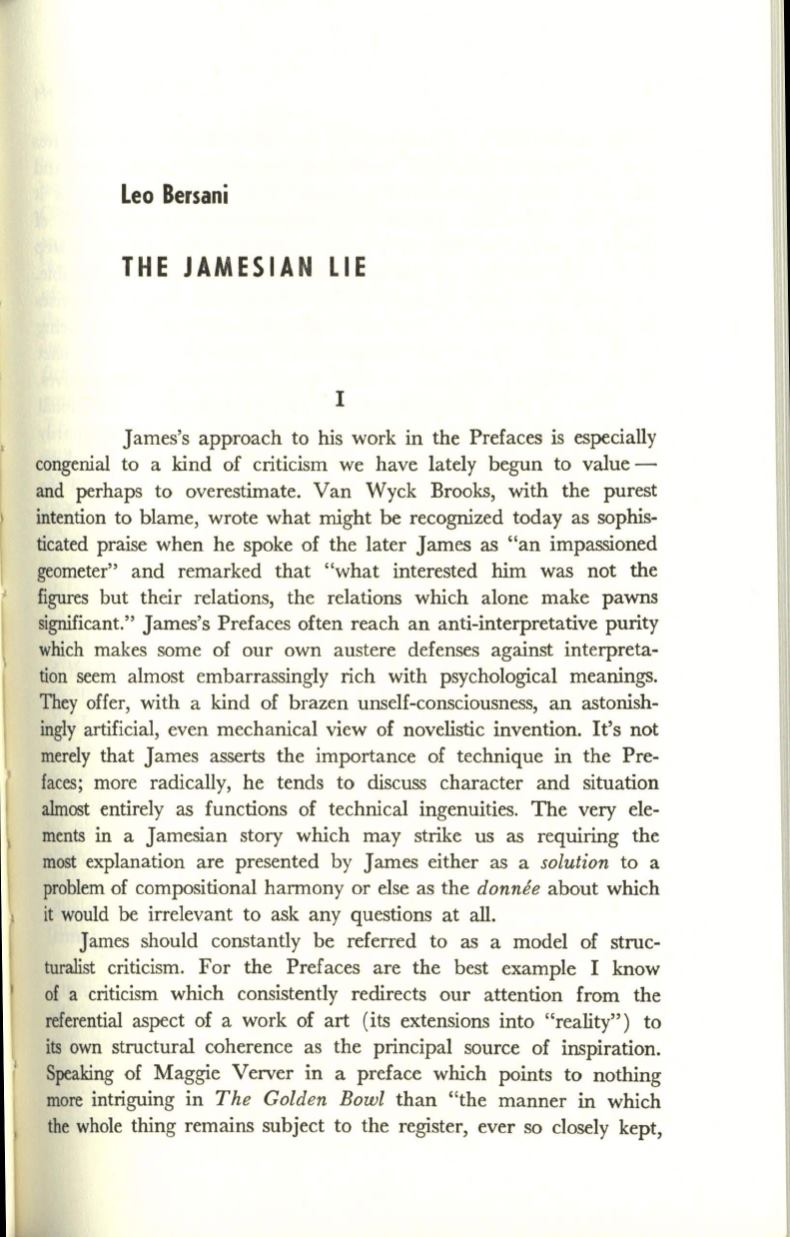
Leo Bersani
THE JAMESIAN LIE
I
James's approach to his work in the Prefaces is especially
congenial to a kind of criticism we have lately begun to value–
and perhaps to overestimate. Van Wyck Brooks, with the purest
intention to blame, wrote what might be recognized today as sophis–
ticated praise when he spoke of the later James as "an impassioned
geometer" and remarked that "what interested him was not the
figures but their relations, the relations which alone make pawns
significant." James's Prefaces often reach an anti-interpretative purity
which makes some of our own austere defenses against interpreta–
tion seem almost embarrassingly rich with psychological meanings.
They offer, with a kind of brazen unself-consciousness, an astonish–
ingly artificial, even mechanical view of novelistic invention. It's not
merely that James asserts the importance of technique in the Pre–
faces; more radically, he tends to discuss character and situation
almost entirely as functions of technical ingenuities. The very ele–
ments in a Jamesian story which may strike us as requiring the
most explanation are presented by James either as a
solution
to a
problem of compositional harmony or else as the
donnee
about which
it would
be
irrelevant to ask any questions at all.
James should constantly be referred to as a model of struc–
turalist criticism. For the Prefaces are the best example I know
of a criticism which consistently redirects our attention from the
referential aspect of a work of art (its extensions into "reality") to
its own structural coherence as the principal source of inspiration.
Speaking of Maggie Verver in a preface which points to nothing
more intriguing in
The Golden Bowl
than "the manner in which
the whole thing remains subject to the register, ever so closely kept,


